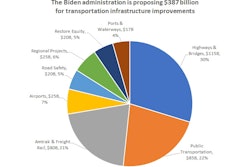
Back in December, ForConstructionPros.com featured Cameron Page, founder and CEO of Extracker, on the GroundBreakers podcast. During the podcast, he shared how cloud-based technology solutions such as his company’s change order communication platform can help construction companies better manage project costs.
In this Q&A, Page shares more insights on how better change order communication will be vital to helping construction companies thrive in the years ahead.
Q: When it comes to change orders, is it management that is the problem or is the issue really about communication? What communication barriers have to be overcome?
On a construction project, there are dozens of companies working together to build the project. Each company has its own internal financial software where they manage their change orders against their own budget.
Because these systems are private in nature, all the communication that happens between companies exists outside of these systems via email, Excel logs and carbon copy documents on the jobsite. As a result, it is incredibly challenging to ensure that the general contractor and the subcontractor are both on the same page when it comes to outstanding change orders.
To solve this, today the industry uses a static “Change Order Request Log” that gets bounced back and forth via email to ensure both parties are forecasting the same thing. The challenge though is that this log is inherently out of date or can contain errors.
Q: What do subcontractors not understand about the cumulative effects of not managing changes orders well? Do you have any horror stories?
Most subcontractors clearly understand the impact delays on approvals or negotiations can have on their cash flow. The problem is that they don’t have the toolset to properly track and collaborate with the GC customers.
As a GC project manager, I had countless scenarios where we would receive change order requests so late that we had no option but to reject them because we no longer had an opportunity to present them to the project owner. I had one instance where a subcontractor ate $60,000 worth of T&M related change order requests because they presented the costs to me six months after the work had been performed! This would have easily been avoided with a communication platform and toolset like Extracker.
Q: You’ve said that the question to always ask when evaluating construction software is “How does it make us a better contractor?” Tell us about characteristics of software that doesn’t. Do developers have a blind spot when it comes to designing for the industry?
Most construction professionals are bombarded by software offerings on a daily basis. Many of these companies were built by founders and teams looking for problems to solve rather than having lived those problems themselves. That doesn’t mean they can’t also build great solutions, but many times they are still figuring out their value proposition while already ramping up sales. This means they are relying on you, the contractor, to tell them if it’s useful.
Using the “Does it make me a better contractor?” method to evaluate software sounds oversimplified, but it is an effective way to quickly filter out offerings that are nice-to-haves vs. those that truly present a clear ROI for your business or value add to your customers.
Q: What are the advantages of integrations rather than proprietary software solutions?
Integrations between software companies are great, and we are seeing a boom in the construction software ecosystem. But again that is often only focused on integrating systems you use internally.
The true challenge in our industry is solving business processes that happen between companies. With our change order communication platform, you can connect with the companies you are working with and stay on the same page as them financially regardless of how you forecast costs internally. This is integrating companies together rather than just using internal tools that still keep you trapped in a silo, which we believe is a much bigger value add.
















